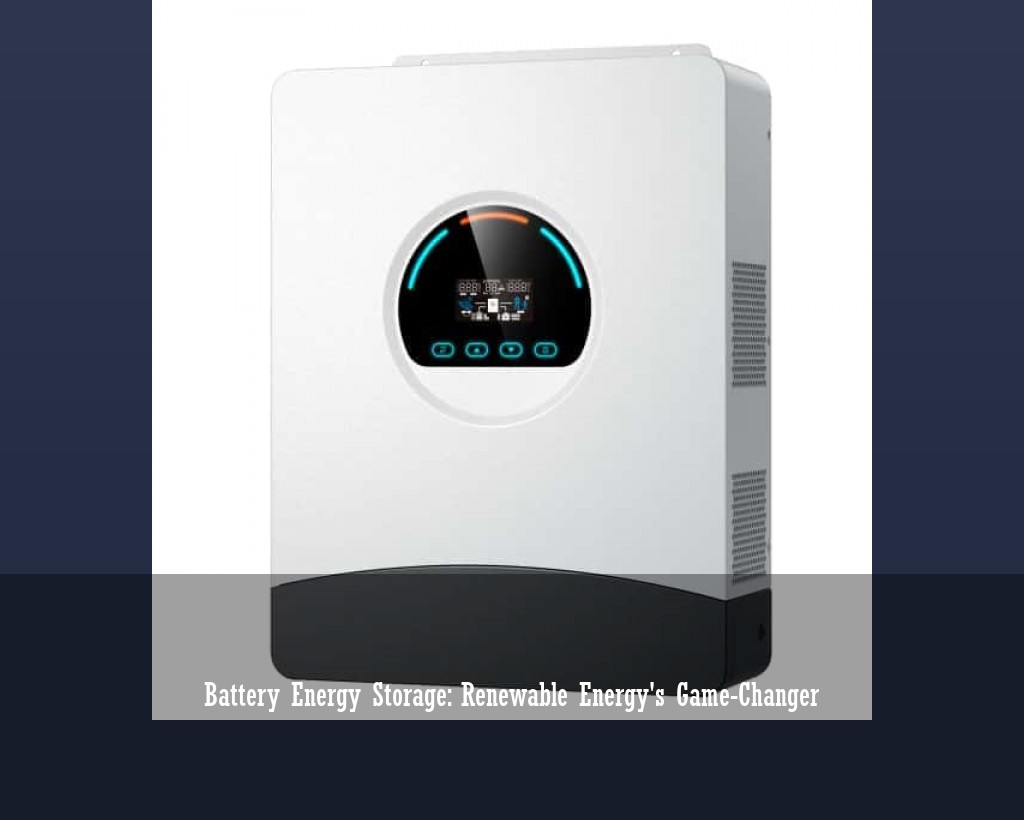Battery Energy Storage: Renewable Energy's Game-Changer
We've all seen the headlines - solar panels now power entire cities, and wind turbines outpace coal plants. But here's the kicker: intermittent generation caused $2.3 billion in wasted renewable energy last year alone. When the sun sets or winds stall, traditional grids scramble to fill the gap with. wait for it. fossil fuel backups.
Battery Energy Storage: Renewable Energy's Game-Changer

Table of Contents
The Solar/Wind Paradox: Clean Energy's Achilles' Heel
We've all seen the headlines - solar panels now power entire cities, and wind turbines outpace coal plants. But here's the kicker: intermittent generation caused $2.3 billion in wasted renewable energy last year alone. When the sun sets or winds stall, traditional grids scramble to fill the gap with... wait for it... fossil fuel backups.
California's 2024 grid emergency tells the story. During a cloudy week in January, natural gas plants supplied 61% of peak demand despite the state's 50% renewable capacity. This isn't just about carbon footprints - it's a financial time bomb. Utilities pay premium rates for last-minute fossil fuel fixes, costs eventually passed to consumers.
Battery Storage: The Buffer We Never Knew We Needed
Enter Battery Energy Storage Systems (BESS), the shock absorbers for clean power grids. These aren't your grandma's AA batteries - we're talking warehouse-sized installations that can power 100,000 homes for 4+ hours. The magic happens through three core functions:
- Time-shifting excess solar production to nighttime use
- Providing 100ms-response grid stabilization
- Replacing gas "peaker" plants during demand surges
Take Italy's recent leap. PLT Energia's 330MW Indigo Project combines solar panels with enough storage to light up Pisa for 18 nighttime hours. By 2024 Q2, such hybrid projects reduced Italy's grid carbon intensity by 28% compared to 2023.
When Theory Meets Reality: Storage That Delivers
Texas - yes, oil country Texas - now leads U.S. battery deployments. The state's 1GW storage capacity (enough for 750,000 homes) prevented 12 potential blackouts during 2024's July heatwave. ERCOT data shows batteries responded 60% faster than gas plants during demand spikes.
But what about homes? Companies like Trina Solar now offer residential battery walls that pay for themselves in 5-7 years. During Germany's 2024 energy crisis, households with storage saved €1,200 annually compared to grid-reliant neighbors.
Breaking the Mold: Storage Gets Smarter
2024's game-changer? Flow batteries using iron instead of rare lithium. These rust-based systems cost 40% less while lasting twice as long. China's CATL already deployed a 200MWh "rust battery" farm in Inner Mongolia - ironic for a region once synonymous with coal.
Then there's thermal storage - think molten salt tanks that store solar heat for 10+ hours. Spain's Andasol plant uses this tech to keep turbines spinning long after sunset, providing 7% of Andalusia's nightly power needs.
The Human Factor: Why This Matters Now
Remember last month's Northeast blackout? A properly configured storage system could've kept 3 million people online. As extreme weather strains grids, batteries aren't just about clean energy - they're becoming critical infrastructure. The 2025 IEC safety standards (released March 15th) finally address fire risks that slowed early adoption.
So here's the bottom line: Energy storage transforms renewables from fair-weather friends to 24/7 powerhouses. While challenges remain (recycling logistics, mineral sourcing), the 2024 market explosion proves the tech's here to stay. Utilities aren't just adopting batteries - they're redesigning grids around storage-first principles. And that changes everything.
Related Contents

Battery Energy Storage: Renewable Energy's Game-Changer
Let's face it – solar panels and wind turbines alone won't solve our energy crisis. The real bottleneck? Storing that clean energy for when the sun isn't shining or wind isn't blowing. Here's the kicker: Global renewable capacity grew 50% last year, but energy storage installations only increased by 15%. That's like building a Ferrari but forgetting the gas tank!

Battery Energy Storage Systems (BESS): The Brain Behind Renewable Energy Revolution
Ever wondered why your solar panels stop working at night? Or why wind farms sometimes pay customers to take their excess electricity? The answer lies in energy storage - or rather, the lack of it. As of March 2025, over 30% of renewable energy generated worldwide gets wasted due to inadequate storage solutions. That's enough to power entire cities!

Battery Storage: Renewable Energy's Game-Changer
Ever wondered why California still experiences blackouts despite having enough solar panels to power the state twice over? The answer lies in intermittency - renewable energy's Achilles' heel. When clouds roll over solar farms or wind stops blowing, traditional grids face instability. This isn't just technical jargon; Texas' 2023 grid collapse during a wind drought cost businesses $2.8 billion.

Battery Energy Storage Systems: Powering the Renewable Energy Revolution
our renewable energy storage infrastructure is kind of like a leaky bucket. We're pouring in solar and wind power faster than ever (global renewable capacity grew 50% last year alone), but without proper storage, we're losing precious resources. The real kicker? Utilities worldwide wasted enough clean energy in 2024 to power Germany for three months. That's where Battery Energy Storage Systems (BESS) come charging in.

Battery Energy Storage: Renewable Energy's Backbone
Ever wondered why your solar panels stop working at night? That's the $15 billion question the battery energy storage system (BESS) industry aims to solve. As renewable sources generated 30% of global electricity in 2023, their intermittent nature keeps utilities awake at night - literally.
